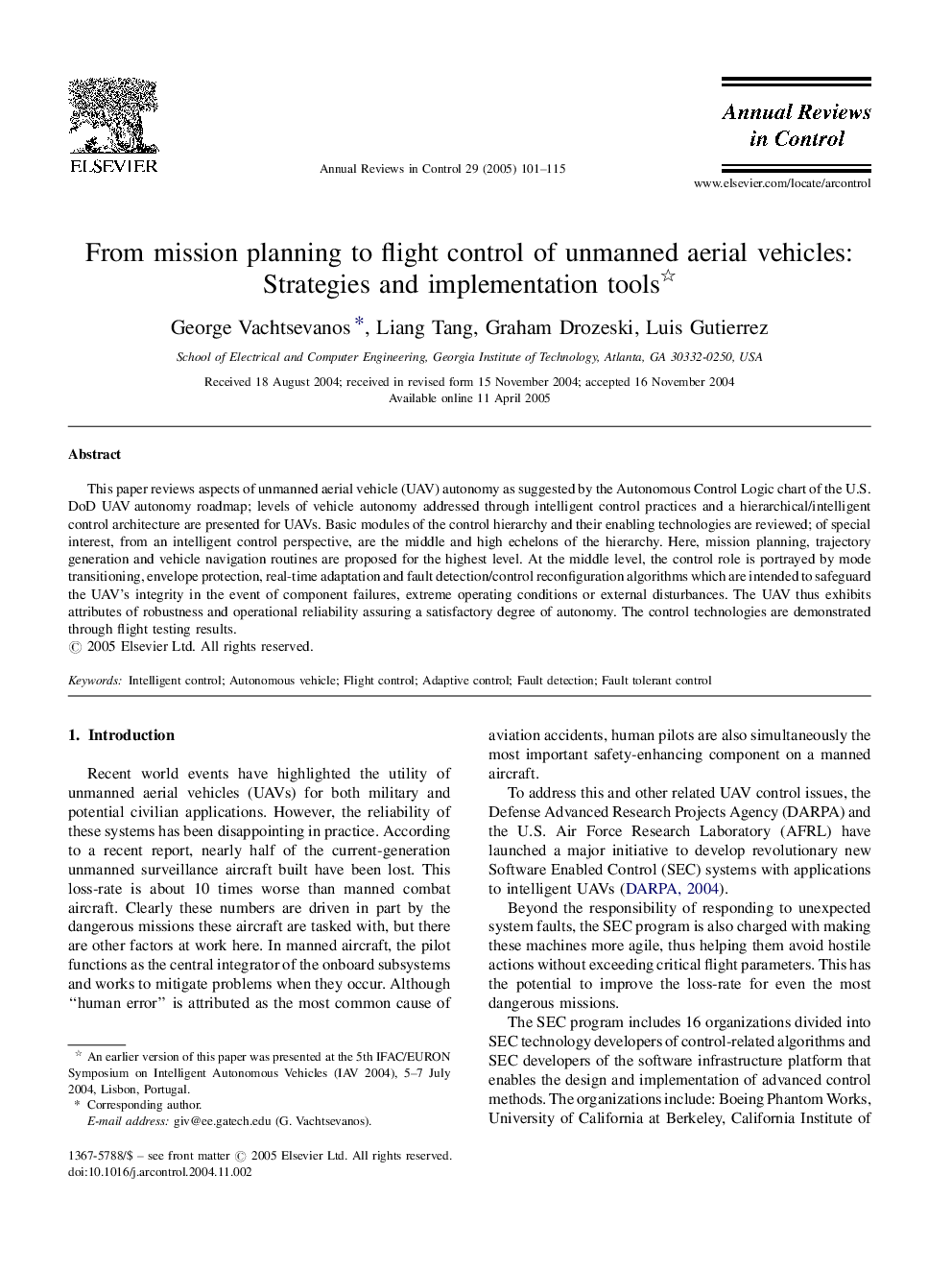| Article ID | Journal | Published Year | Pages | File Type |
|---|---|---|---|---|
| 10398638 | Annual Reviews in Control | 2005 | 15 Pages |
Abstract
This paper reviews aspects of unmanned aerial vehicle (UAV) autonomy as suggested by the Autonomous Control Logic chart of the U.S. DoD UAV autonomy roadmap; levels of vehicle autonomy addressed through intelligent control practices and a hierarchical/intelligent control architecture are presented for UAVs. Basic modules of the control hierarchy and their enabling technologies are reviewed; of special interest, from an intelligent control perspective, are the middle and high echelons of the hierarchy. Here, mission planning, trajectory generation and vehicle navigation routines are proposed for the highest level. At the middle level, the control role is portrayed by mode transitioning, envelope protection, real-time adaptation and fault detection/control reconfiguration algorithms which are intended to safeguard the UAV's integrity in the event of component failures, extreme operating conditions or external disturbances. The UAV thus exhibits attributes of robustness and operational reliability assuring a satisfactory degree of autonomy. The control technologies are demonstrated through flight testing results.
Keywords
Related Topics
Physical Sciences and Engineering
Engineering
Control and Systems Engineering
Authors
George Vachtsevanos, Liang Tang, Graham Drozeski, Luis Gutierrez,
